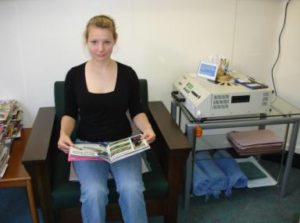How does it work?
The Neotonus chair delivers a magnetic pulse to the perineal area (the area around the back passage). This pulsed magnetic field stimulates electrical activity in the pelvic nerves, which in turn cause a rhythmic contraction of the pelvic floor muscles. Low frequency stimulation activates the sling muscles which hold the bladder and bowel from falling down into the pelvic outlet. High frequency stimulation contracts the squeeze muscles around the bladder and bowel outlets. Recent studies have also shown it to be useful pre and post operatively for men undergoing radical prostatectomy for prostate cancer.
What is involved in the therapy?
Each session on the chair lasts 25 minutes in duration and it is recommended that you have 16-20 sessions in total. The sessions are usually scheduled twice weekly and should be at least 36 hours apart. The low frequency pulsing starts for 11 mins then there is a 2 min rest period followed by a 11 min high frequency pulsing.
The candidate adjusts the power setting to individual comfort. 8 sessions may be required before any change is noted.
Who will benefit most from this therapy?
The best results in trials have been in treating stress urinary incontinence (leakage of urine when you cough, sneeze or exercise).
Definite benefits have also been shown in urge urinary incontinence (when you feel the urge to go you have to hurry), interstitial cystitis and chronic prostatitis (inflammation of the prostate and bladder which is not due to bacterial infection). Trial results for treatment of faecal incontinence have shown minimal improvement. Clinical experience suggests that anal seepage and constipation due to difficulty in evacuating a bowel motion are helped by this therapy.
Some studies have shown improvement in erectile dysfunction in some men and some women have reported increased sexual awareness following therapy. This therapy may also have a role in treating pelvic pain due to pelvic muscle spasm.
Who is not suitable for this therapy? This magnetic stimulation therapy may not be suitable for you if you have:
- implantable electrical device in spine
- metal implants in hips, knees or pelvis (eg hip or knee replacements), metal intra-uterine device (IUD). Surgical staples are not a problem.
- diminished sensation around your perineum. You must be able to move unassisted around the seat of the chair.
- if you are pregnant
It is advised you wait 6 weeks after delivering a baby or after major pelvic, gynaecological or lower bowel surgery.

